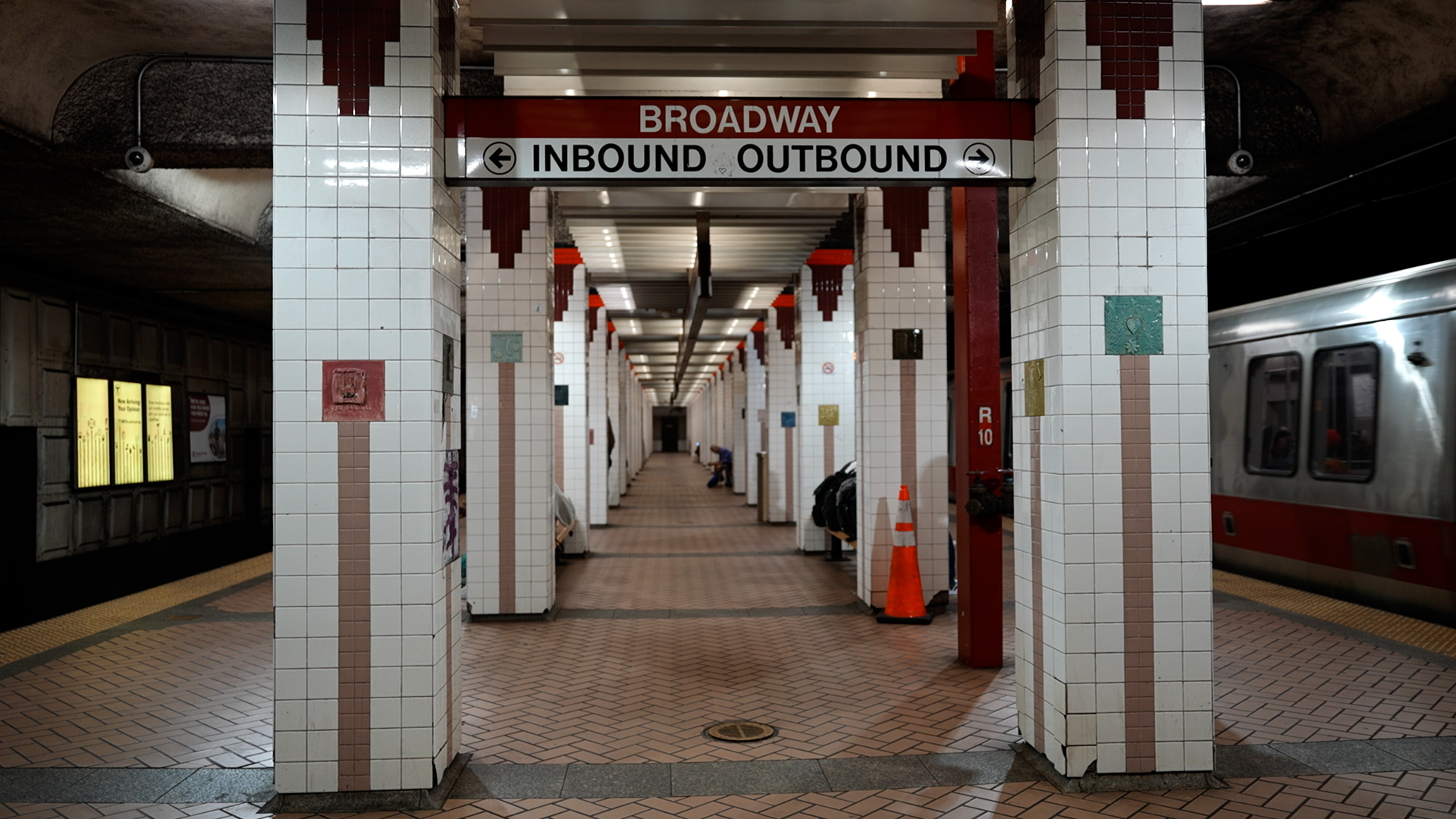It's a visceral feeling. A churning in Kelvin Lalin's stomach each time a train rolls by.
"I can't see the T sign without feeling sick," he said, his voice breaking.
It's been more than year since Lalin lost his uncle, Robinson Lalin.
On April 10, 2022, Robinson was stepping off a Red Line train at Broadway Station when his arm got caught in a side passenger door. The father of two, a loyal T rider, was dragged to his death.
"I was told he was unrecognizable," Lalin said. "It's been difficult, very difficult, to deal with the loss."
In a preliminary investigation, the NTSB identified a fault in the train's local door control system, which enabled it to move while the door was obstructed.
In March, the Lalin family filed a lawsuit accusing the MBTA of negligence saying the agency failed to properly inspect, repair, and monitor its equipment and claiming the train’s operator did not make a significant effort to make sure all passengers were clear of the doors.
"Any time you hear a story like this, particularly Robinson's case, it just hits you that, you know, that that's someone who is not going home that night. That's someone who is not going to see their family again. And it's so preventable. And that's what makes it tragic," said Ben Zimmerman, the Lalin family’s attorney.
The day the lawsuit was filed, the MBTA offered its condolences to Lalin's family in a statement, but would not comment on the complaint specifically.
"Mr. Lalin's death was a tragedy, and the MBTA has extended its deepest condolences to his loved ones. Because of the pending litigation, the MBTA will not be commenting on the complaint itself," the statement said.
In April, the agency filed a response to the lawsuit denying the allegations. The MBTA claimed, in part, that Robinson Lalin was partly at fault for his death.
The MBTA said the train car involved in the incident was inspected two weeks before Lalin's death and there were no issues with the local door control system. The agency said a test of the entire Red Line fleet after the fatal incident returned similar results.
Shortly after Lalin's death, the NBC10 Boston Investigators began looking into door issues on the T and found a myriad of incidents that are rarely made public, but further illustrate the safety issues plaguing the country's oldest subway system.
"It should not be any surprise to anyone in charge at the T or anyone who's paying attention that these things are an issue," said Brian Kane, the executive director of the MBTA Advisory Board.
The NBC10 Boston Investigators obtained MBTA records of reported door incidents on the Red, Blue, Green, and Orange lines from 2019 to April 9, 2022, the day before Robinson Lalin's death.
During that time the total number of incidents on all four lines combined was consistent, hovering around 1,000 per year.
The most frequently reported problem on the Red, Orange, and Blue lines was "half door shut off," when one half of a two-door set fails to open or close or is shut off.
On the Red Line, the T's largest and one of its oldest fleets, "half door shut off" accounts for approximately 43% of all incidents. There were 727 reported over the last three and a half years.
To see more data, scroll down
"The doors on the very oldest trains operate on basically an analog system, an analog system that probably should have been replaced 20 years ago. Analog systems are prone to failure in ways that digital systems just aren't," Kane said. "The mechanical systems in the oldest Red Line trains operate on air and are subject to heating and freezing and dust and dirt, any of which can really mess with the mechanisms in there. It's not a surprise. It is certainly shocking, though, how often this happens."
"Miscellaneous door problem" and "all doors will not open" were also among the top reported incidents.
Across all four lines, the T reported approximately 250 issues with "Door Control" panels, which the MBTA says allow the operator to open and close the doors.
We asked the MBTA whether the malfunction they found in the door of the train car that dragged Robinson Lalin to his death was reflected in the records, but due to pending litigation and the ongoing NTSB investigation they refused to answer our question.
In the eight years he spent at the MBTA, most recently as the director of operations analysis, Kane recalls door issues being a common problem reported daily to T executives.
"There are things called 'pages' that come out every day. They sort of list what's going on and what kind of issues are taking place. Door issues were pretty common, from what I can recall, especially on the Red Line," he said.
Now, as the executive director of the MBTA advisory board, he's hopeful new Red Line trains will limit some of these old issues.
"Let's not forget that about a third of the trains on the Red Line were manufactured before the first moon landing. It tells me that there are some mechanical issues with some very old trains that should not be out there anymore," he said. "If I'm a Red Line operator, I cannot wait for these new Red Line trains to come, assuming they work properly, because it makes their job easier and it makes everyone safer, including them."
In a recent update, the MBTA said the Chinese company building the new trains is severely behind schedule and they won't be ready anytime soon.
Zimmerman says the door issues are merely a symptom of a wider problem with safety on the T. He said this case is the MBTA's chance to show some accountability.
"Whether you're talking about the operation of the train in the stations, whether you're talking about the staffing of the trains, whether you're talking about the condition of the trains, there are many opportunities, many missed opportunities in this case, for the T to have prevented this tragedy," he said.
For Kelvin Lalin, any improvements will come too late, but he said there's no deadline for the MBTA to take responsibility for what happened to his uncle. He said the legal fight his family is embarking on is about more than Robinson.
"He trusted the system. The system failed him," Lalin said. "T riders matter. Their lives matter. Their safety matters."
The following charts break down data provided by the MBTA
Red Line
Total number of incidents per year on Red Line
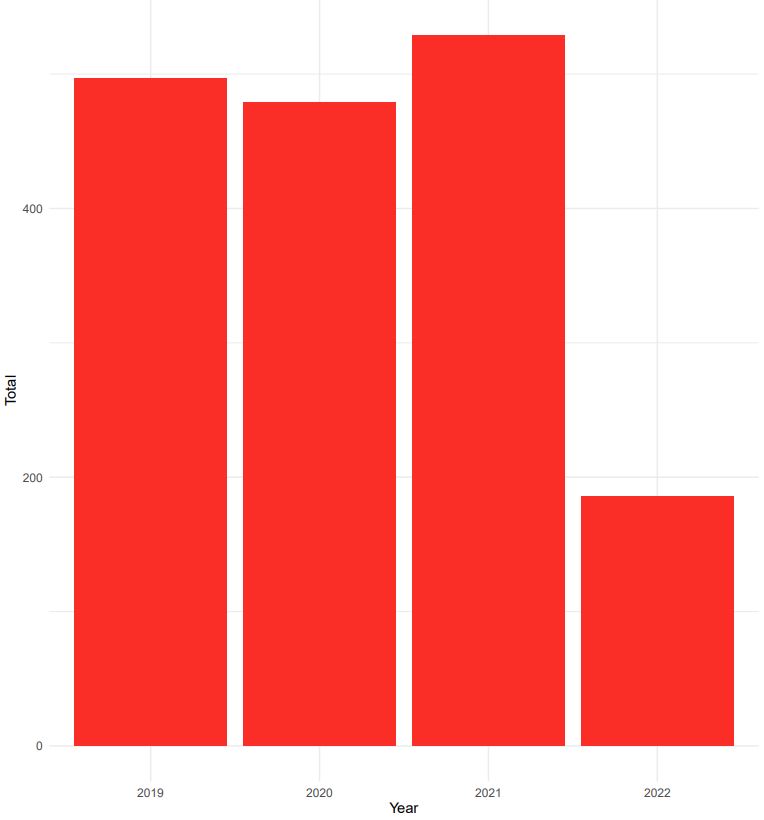
To view in full screen, click here.
Percentage of times door problems occurred on Red Line trains between January 1, 2019, and
April 9, 2022
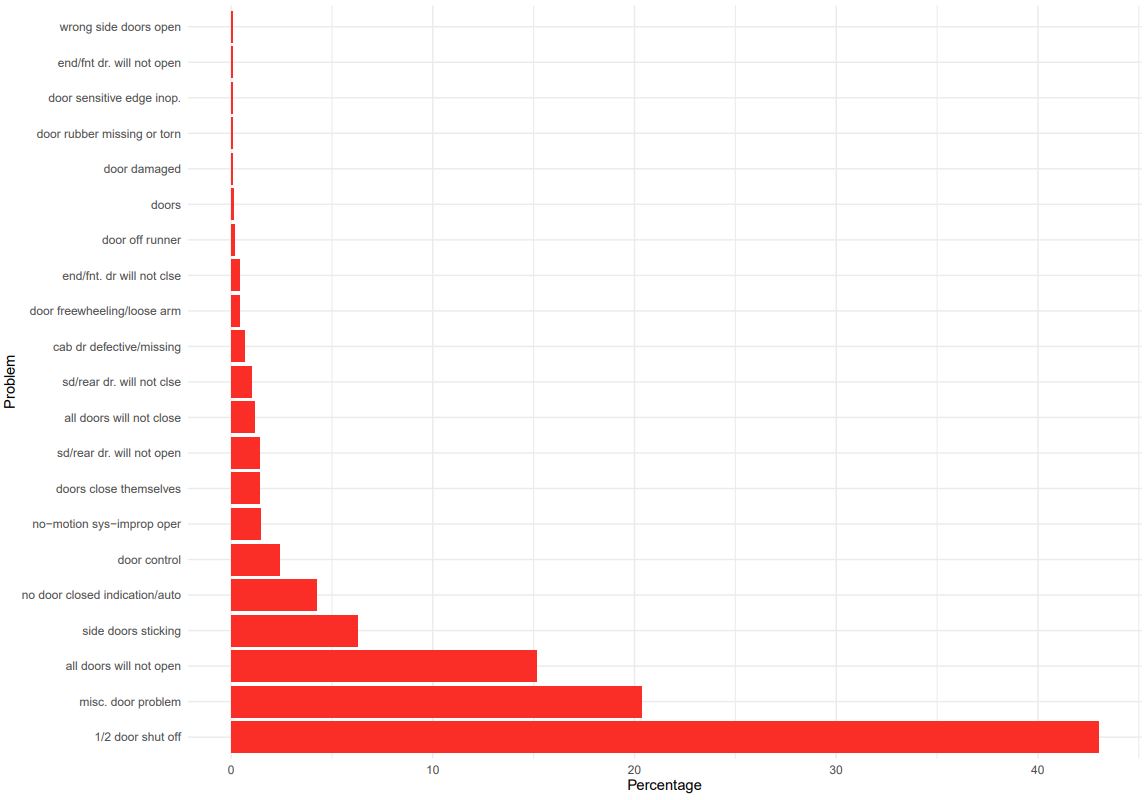
To view in full screen, click here.
Percentage of times each door issue occurs on Red Line trains, split into years
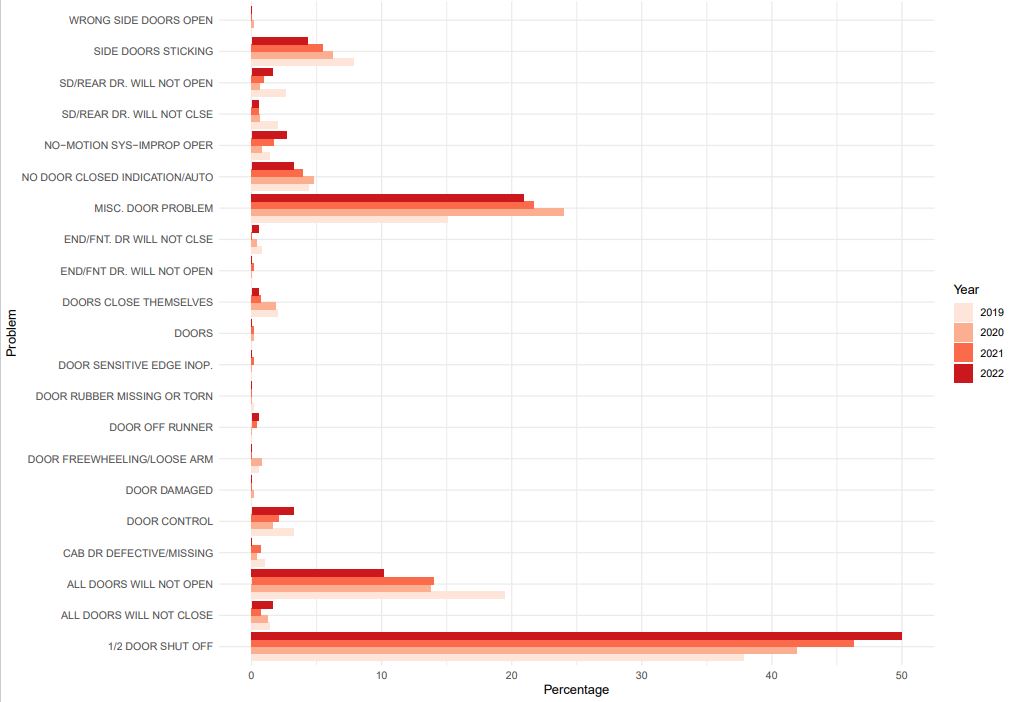
To view in full screen, click here.
Door problems that account for more than 2.5% of issues on the Red Line

To view in full screen, click here.
Orange Line
Total number of incidents per year on Orange Line
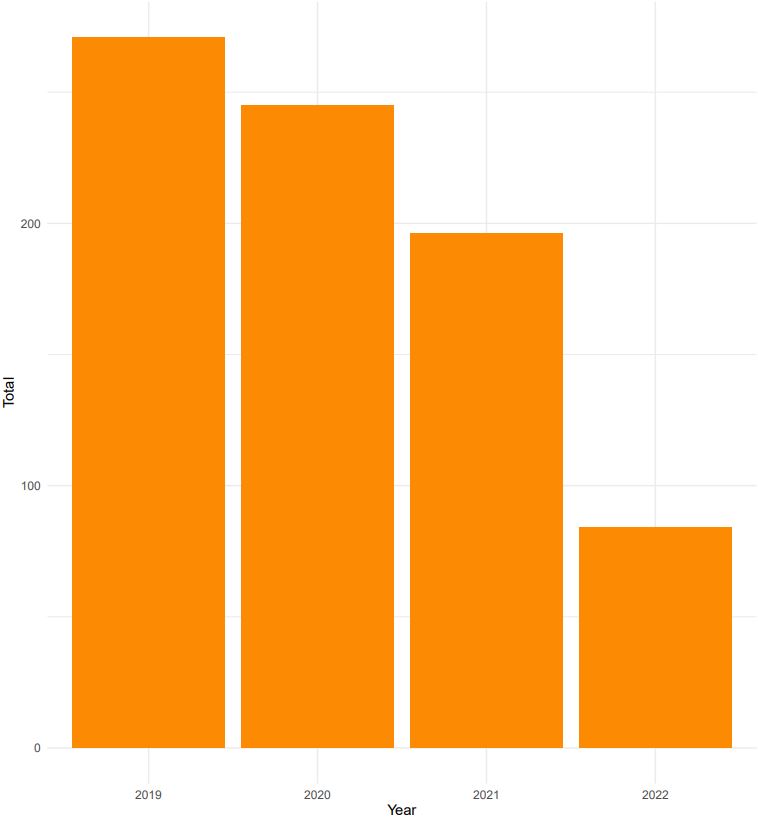
To view in full screen, click here.
Percentage of times door problems occurred on Orange Line trains between January 1, 2019, and
April 9, 2022
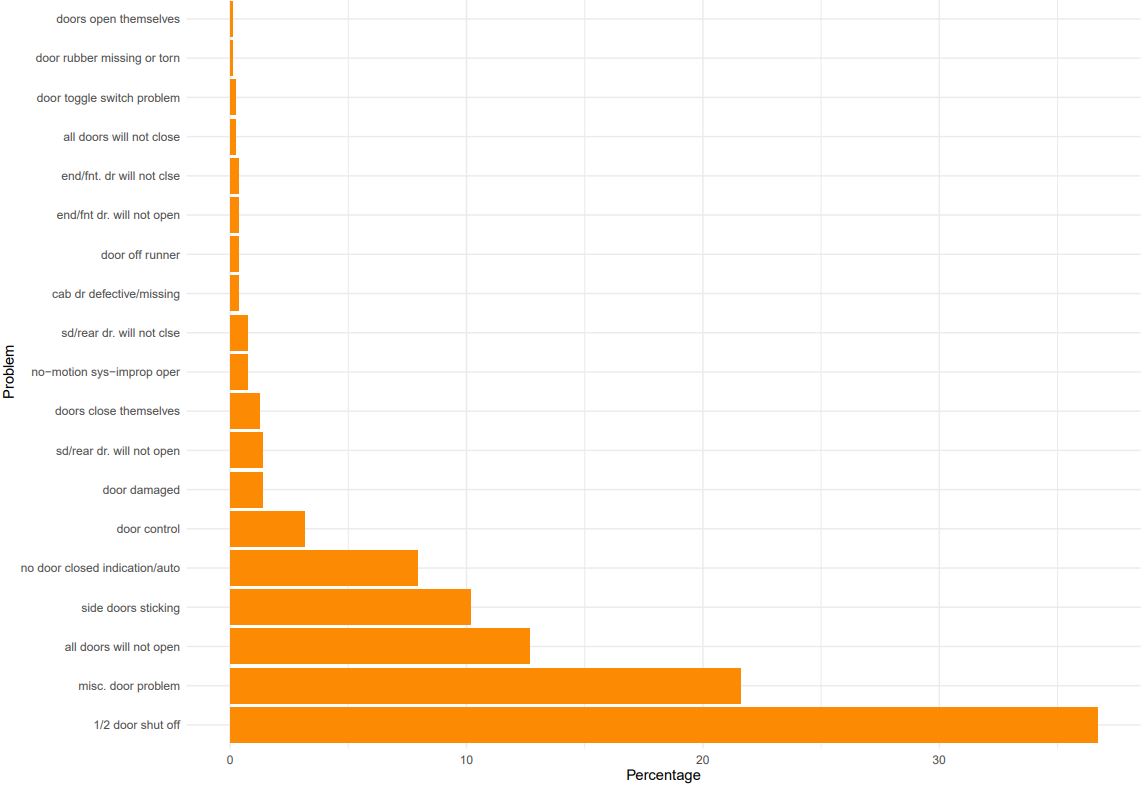
To view in full screen, click here.
Percentage of times each door issue occurs on Orange line trains, split into years
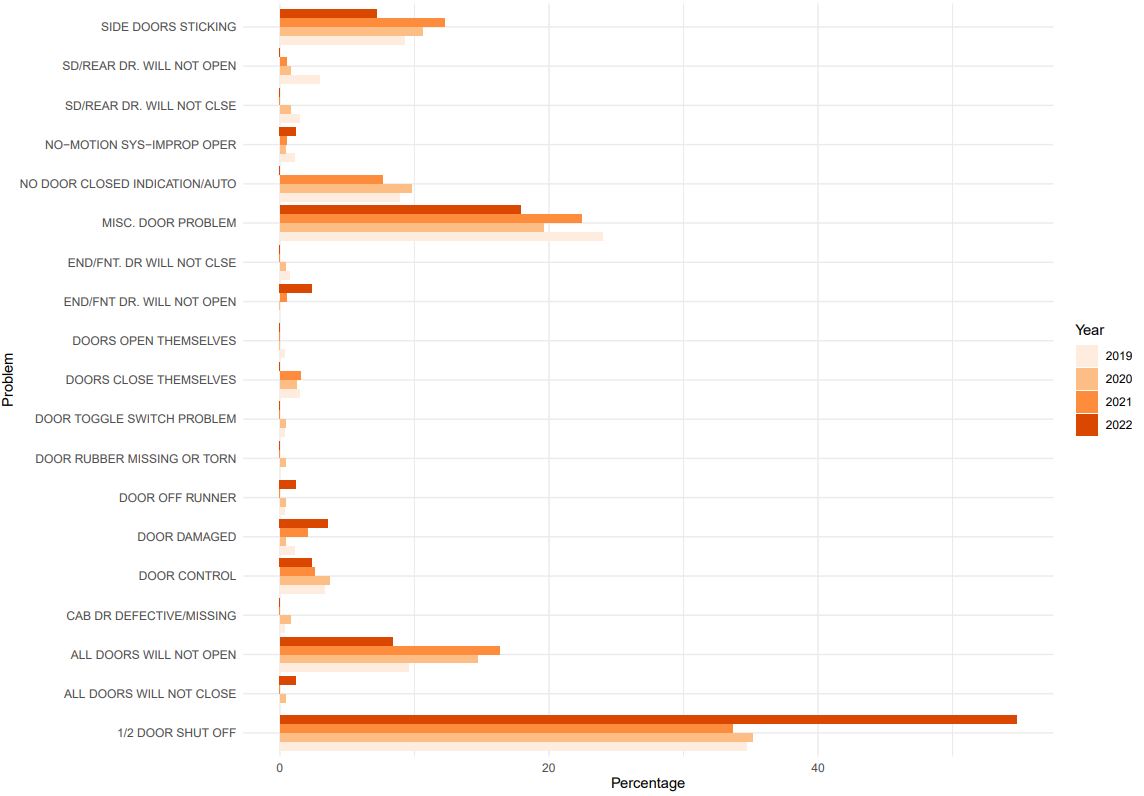
To view in full screen, click here.
Door problems that account for more than 2.5% of issues on the Orange Line
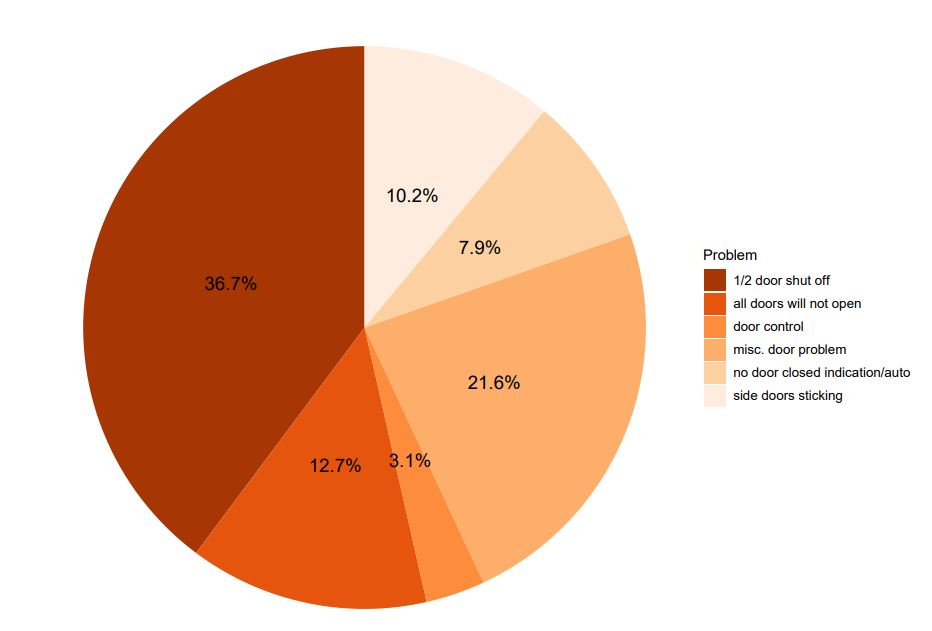
To view in full screen, click here.
Green Line
Total number of incidents per year on Green Line
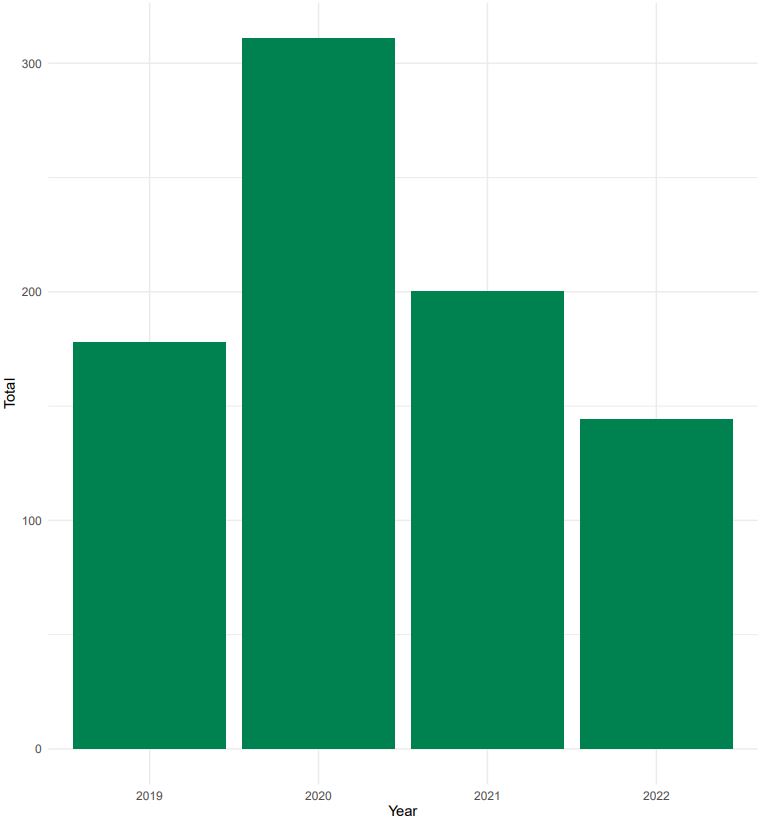
To view in full screen, click here.
Percentage of times door problems occurred on Green Line trains between January 1, 2019, and
April 9, 2022
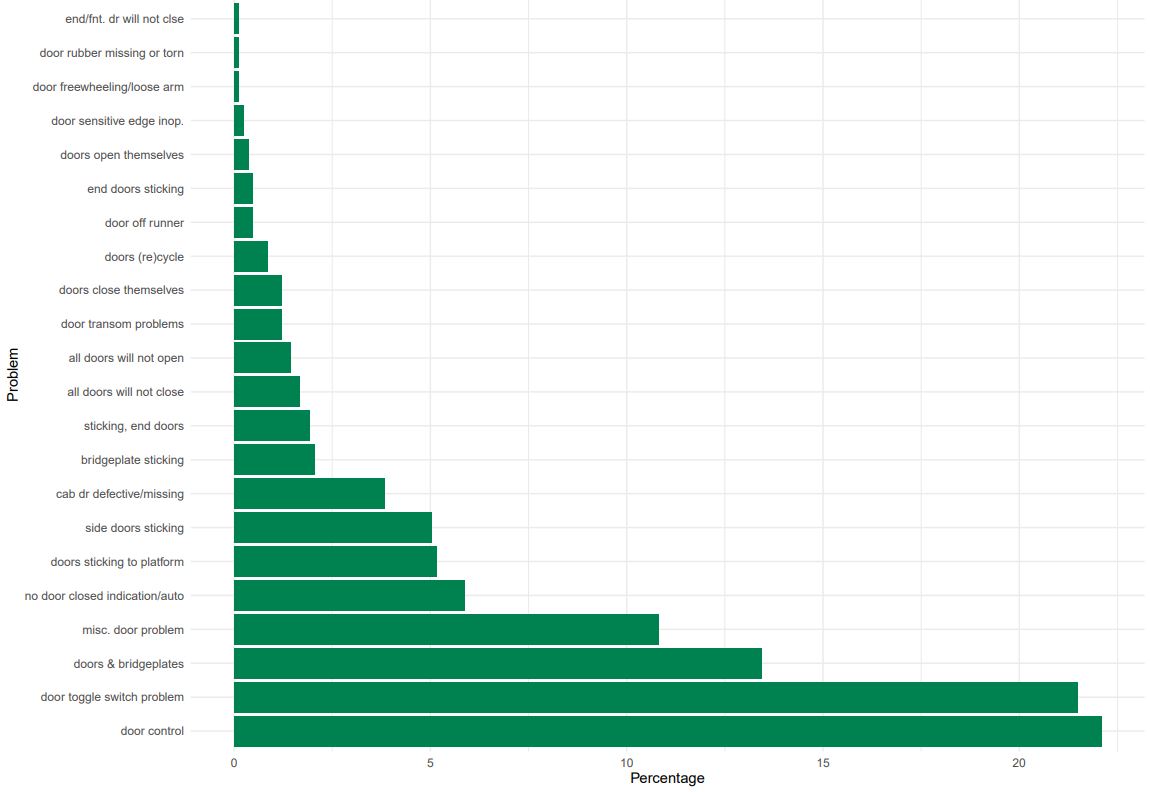
To view in full screen, click here.
Percentage of times each door issue occurs on Green line trains, split into years
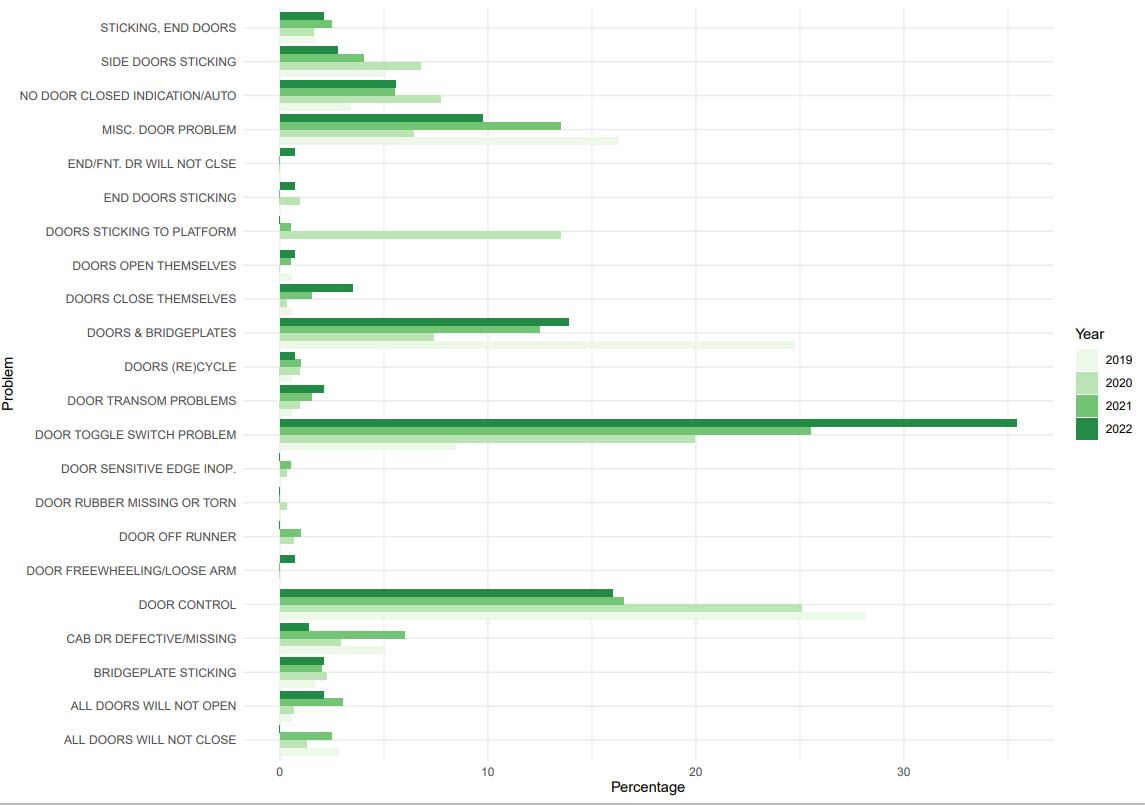
To view in full screen, click here.
Door problems that account for more than 2.5% of issues on the Green Line
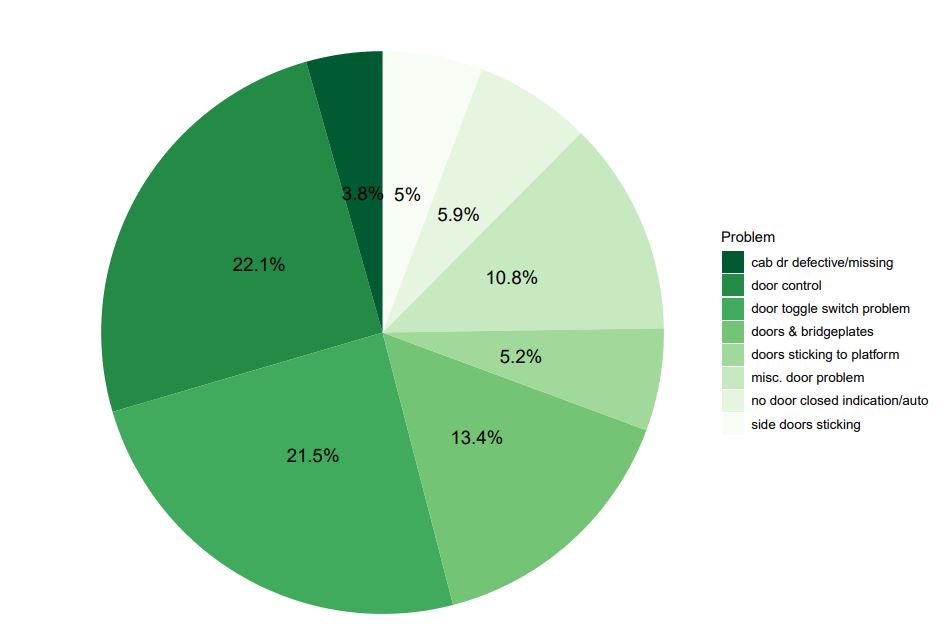
To view in full screen, click here.
Blue Line
Total number of incidents per year on Blue Line
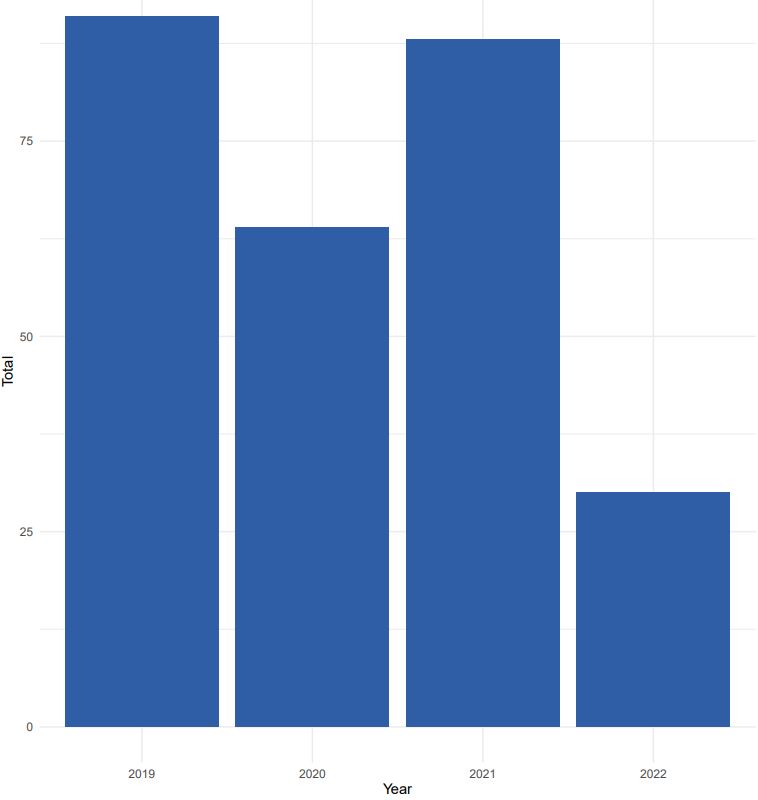
To view in full screen, click here.
Percentage of times door problems occurred on Blue Line trains between January 1, 2019, and
April 9, 2022

To view in full screen, click here.
Percentage of times each door issue occurs on Blue line trains, split into years
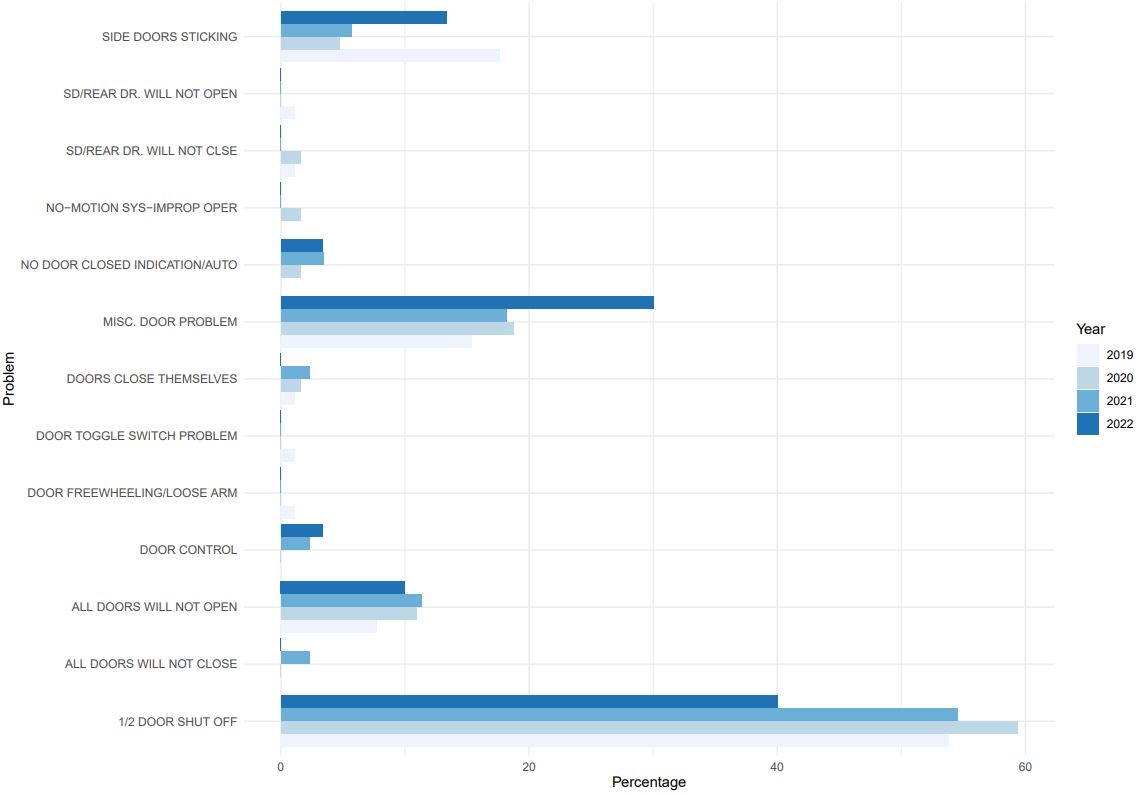
To view in full screen, click here.
Door problems that account for more than 2.5% of issues on the Blue Line

To view in full screen, click here.
